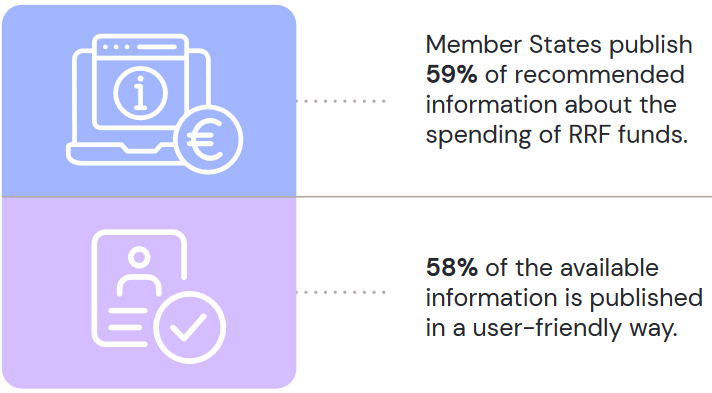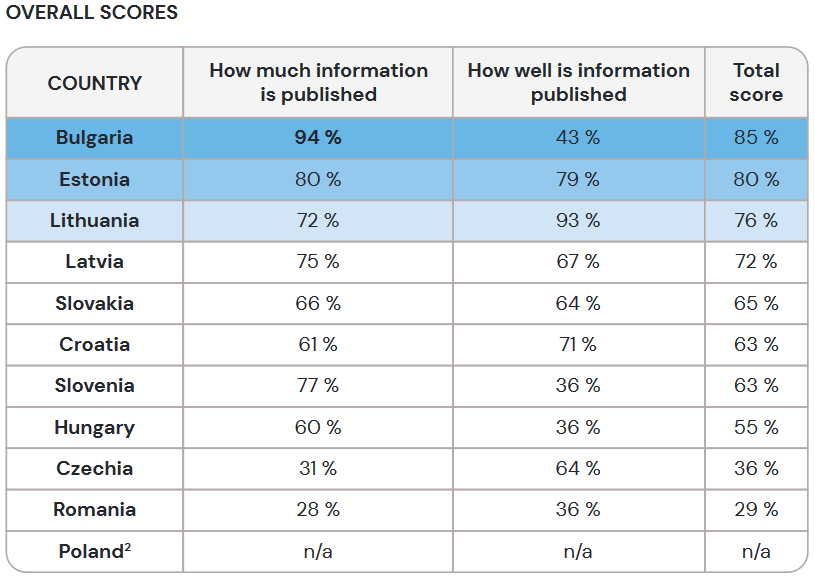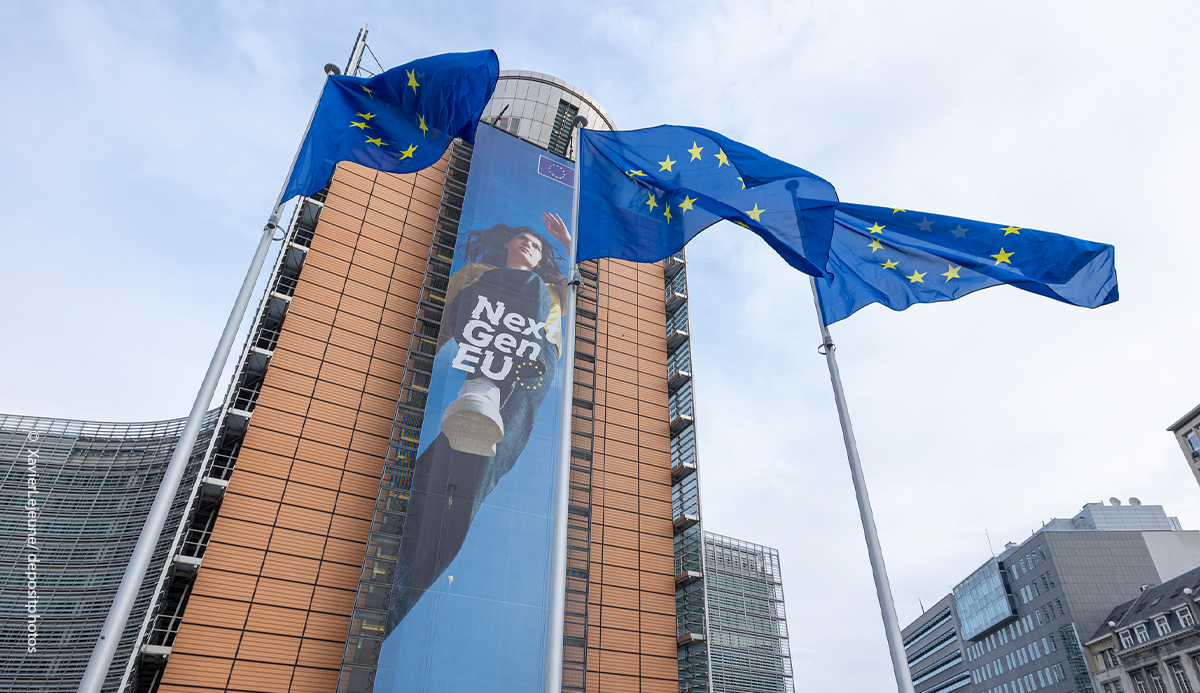
Published date
12 May, 2023
The Recovery and Resilience Facility (RRF) is planned to transform the European Union and its Member States to make them more resilient and to improve economies and public services.
However, the Facility's governance does not have robust public transparency requirements, which hinders the work of journalists and civil society organisations in preventing corruption or money laundering and makes it difficult to assess the effectiveness of investments
Following the pressure from, among others, the Open Spending EU Coalition, the EU legislators recently mandated the Member States to publish a list of the 100 largest fund recipients once every six months, including the data about the recipient's legal name and the amount of funds received.

The EU's existing data architecture allows for the publication of considerably more data. Some countries went beyond minimum EU requirements and published more spending information than legally required, but citizens deserve more - countries do not ensure sufficient recommended transparency levels. Our recommended disclosure and transparency standard is developed to ensure citizens can track funds effectively and use that information to spot potential problems and improve the public goods, services and works that impact their daily lives.
This report reviews the current state of RRF data publication in ten EU countries. It is intended to close the transparency guidance gap and help countries increase transparency beyond EU compliance.
Main Results
This pilot study was conducted in Bulgaria, Croatia, Czechia, Estonia, Hungary, Latvia, Lithuania, Poland, Romania, Slovakia, and Slovenia. It finds that:
- - Member States publish just under 60% of the recommended information.
- - The published information is only about 60% user-friendly.
- - Two countries publish less than 50% of RRF spending information: Czechia (36%) and Romania (29%).
- - Bulgaria (85%), Estonia (80%), and Lithuania (76%) are leading in how much and how well information is published.
- - Member States publish little information on final recipients, especially about subcontractors or natural persons behind companies.
Best Practice
Bulgaria has an official Portal for EU funds - “UMIS 2020” - that lists projects under the RRF plan, including the activities, procurement procedures, participating organizations, financial information, and indicators. It also contains the unique ID of participants, such as contractors and subcontractors, through which other data can be found in other public registers.
Lithuania has a central portal where publication plans, changelogs, and feedback channels are available; also, data on granting schemes and procurement are in open data formats.
The key lessons are:
- - While national authorities promote transparency and comply with EU regulations, citizens deserve more - countries do not ensure sufficient recommended transparency levels.
- - There are varying practices in publishing the personal data of fund recipients, hinting towards uncertainty about how personal data protection applies in public spending.
- - Spending and contracting parties’ data are often published on multiple, rarely interoperable platforms, making linking data across them burdensome.
Our recommendations:
- - The EU legislators should pursue a comprehensive policy of uniform obligations to publish information about its budget spending. This can be done by amending the Financial Regulation and including the Public Spending & Public Procurement category as a High-Value Dataset under Article 14 of Open Data Directive 2019/1024.
- - The EU should introduce higher and clearer standards of personal data disclosure in the EU funds-related regulations.
- - Member States should create central portals containing all available public information about public spending from the planning process to contract execution.
More detailed recommendations can be found in a report.
Self-assessment tool
Using our self-assessment tool, anyone can apply our methodology to see how transparent RRF funds are in other countries.

In other news
There are some new developments in the work on the anti-corruption directive. In February, the European Parliament’...
Learn moreWelcome to our review of our members’ activities. What did they since the beginning of 2024? You will find the ans...
Learn moreThe European Commission published its Recovery and Resilience Facility Mid-term Evaluation Report on 21 February. Much e...
Learn more

